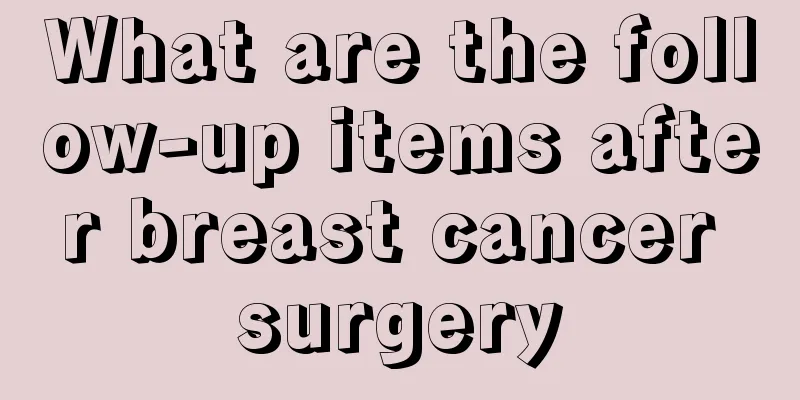Analysis of the current status of thyroid cancer

|
Nowadays, many people suffer from thyroid cancer, and the incidence of this disease is getting higher and higher, which seriously endangers the health of patients. However, many friends around us do not know about this disease. Let me introduce to you the current status analysis of thyroid cancer, I hope it can help everyone. 1. What is the biological behavior of thyroid cancer? Thyroid cancer has various biological behaviors. For example, differentiated papillary carcinoma, especially in adolescent patients, may be the most favorable cancer for humans, with a long course of disease, good prognosis, and almost no impact on normal life expectancy; while undifferentiated carcinoma is the cancer with the worst prognosis, which develops rapidly and has an average survival period of 3 to 6 months. Some scholars divide patients with papillary thyroid cancer into two groups: low-risk group and high-risk group. The mortality rate of patients in the low-risk group is only 1 or 2 10 years after surgery, while the prognosis of patients in the high-risk group is poor, with a mortality rate of 50% to 75% 10 years after surgery. Some people abroad have suggested that family members with familial medullary carcinoma, if they have RET gene mutations, can undergo preventive total thyroidectomy. How is thyroid cancer diagnosed? The diagnosis rate of clinical palpation is about 70-80%, and the diagnosis rate of B-ultrasound (B-ultrasound plus CT scan) can reach 90-95%. Especially in judging cervical lymph nodes, B-ultrasound plays an irreplaceable role. I131 radionuclide scanning only reflects the iodine absorption function of thyroid nodules, and is currently not very helpful in distinguishing benign and malignant tumors. Other imaging examinations, such as CT and MR, are not as good as ultrasound for the qualitative diagnosis of thyroid tumors, but when the primary lesions or metastatic lesions are large, CT and MR can show the anatomical relationship between the tumor and surrounding tissues and organs more comprehensively than ultrasound. What are the treatments for thyroid cancer? The first choice for thyroid cancer is surgery, which can be supplemented by electrocautery, postoperative external irradiation or I131 therapy when necessary. I131, chemotherapy and targeted therapy can be considered for patients in the advanced stage. IV. What is the efficacy of I131 treatment for distant metastasis of thyroid cancer? About 10% to 30% of papillary carcinoma and follicular carcinoma metastasize to distant sites, most commonly to the lungs, followed by bones. The efficacy of I131 in treating lung metastases is 60% to 70%, and that of bone metastases is 30% to 40%. Elderly patients (with severe local invasion, incomplete resection, and extensive metastases to the neck and upper mediastinum) may consider preventive I131 treatment. 5. What is thyroid hormone replacement therapy? One of the theories for the occurrence of thyroid cancer, nodular goiter, adenoma, etc. is that endocrine imbalance and excessive secretion of thyroid stimulating hormone (TSH) from the pituitary gland cause thyroid hyperplasia. Therefore, the "feedback" mechanism can be used to take thyroid preparations orally after surgery to inhibit TSH and prevent recurrence. In general clinical practice, TSH is controlled below 1.0, or at least below 2.0, without the occurrence of hyperthyroidism. Lifelong medication is recommended after thyroid cancer surgery, and it can be taken orally for 2-3 years after benign nodules and adenomas. 6. Does anaplastic thyroid cancer have a poor prognosis? Anaplastic thyroid cancer is a general term for a type of disease. In addition to typical large cell and small cell cancers, squamous cell carcinoma, anaplastic papillary, follicular, and medullary cancers can also be classified into this category. The treatment of anaplastic thyroid cancer is still disappointing. Although radiotherapy and chemotherapy have certain sensitivity, they still cannot improve the prognosis. Only a few early cancers confined to the gland can survive with postoperative radiotherapy and chemotherapy. |
<<: What is the cure rate of pituitary tumors
>>: Understanding thyroid cancer examination
Recommend
Women with itchy nipples should beware of two diseases
Women's beauty is based on health. There are ...
Feeling anxious and restless
When faced with something we are unfamiliar with ...
These 5 factors are responsible for sticky and black stools
Sticky and black stools are a common occurrence i...
How is pituitary gland fullness caused? What are the causes of pituitary gland fullness?
There are many reasons for the fullness of the pi...
What are the causes of hamartoma
Hamartoma is a tumor-like deformity. It is differ...
Elderly men are most susceptible to prostate cancer
For male friends, the pressure of work is very gr...
What's the matter with eating without pooping
People with constipation are said to have the phe...
Will my father's prostate cancer be inherited?
Prostate cancer is a common male disease. Patient...
Youpin smart body fat scale?
Most people may not have heard of books about bod...
Saliva after tooth extraction
Many people have a lot of saliva after having a t...
Tips to prevent shoes from squeezing your feet
Many people know that shoes will become larger as...
Chemical factors are the cause of nasopharyngeal carcinoma discovered in recent years
Although men have more nasopharyngeal cancer than...
Seven things to note when keeping in good health in summer
The summer sun is shining brightly and the geothe...
Things to know about health preservation in the beginning of autumn
After the beginning of autumn, the weather will g...
What to do if your nails are small?
Nails that are too small often make people's ...









